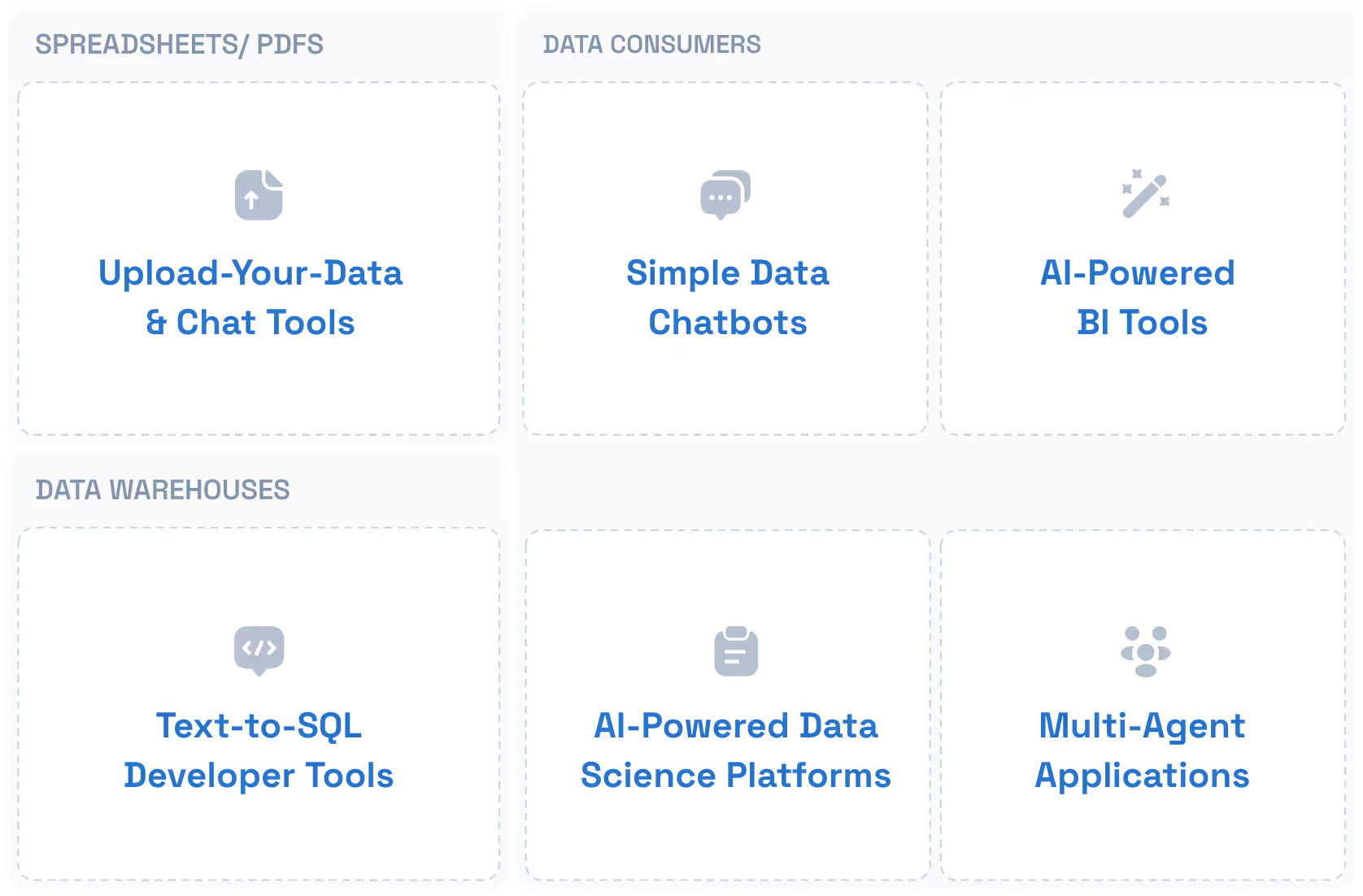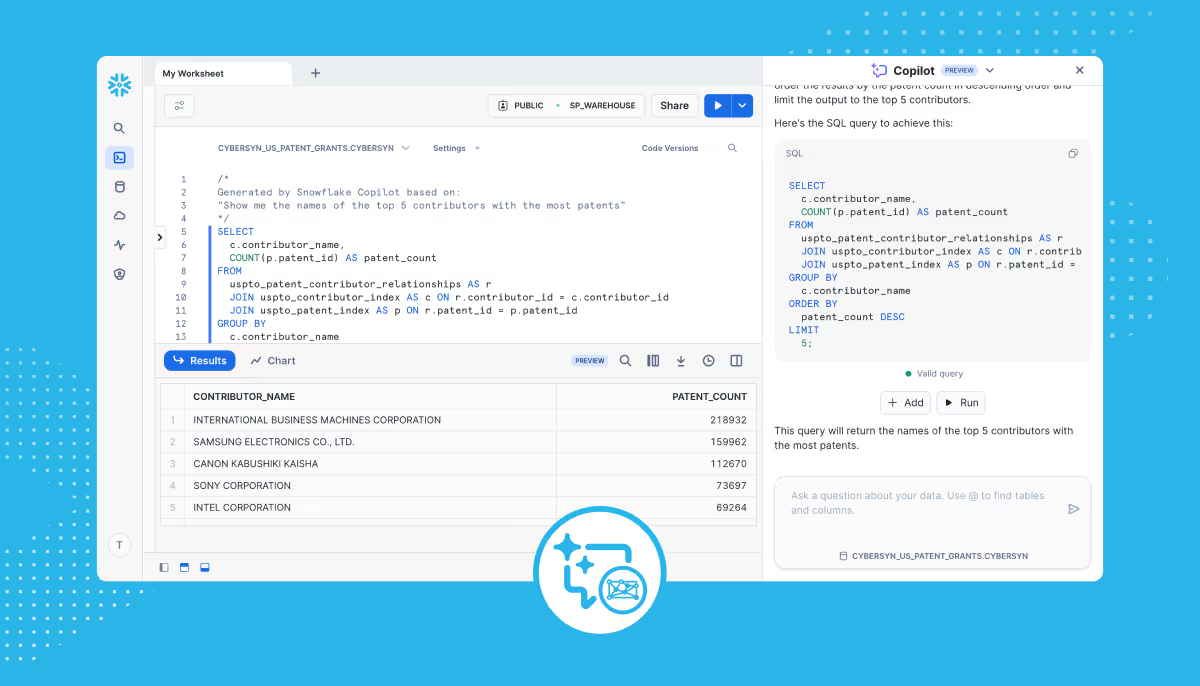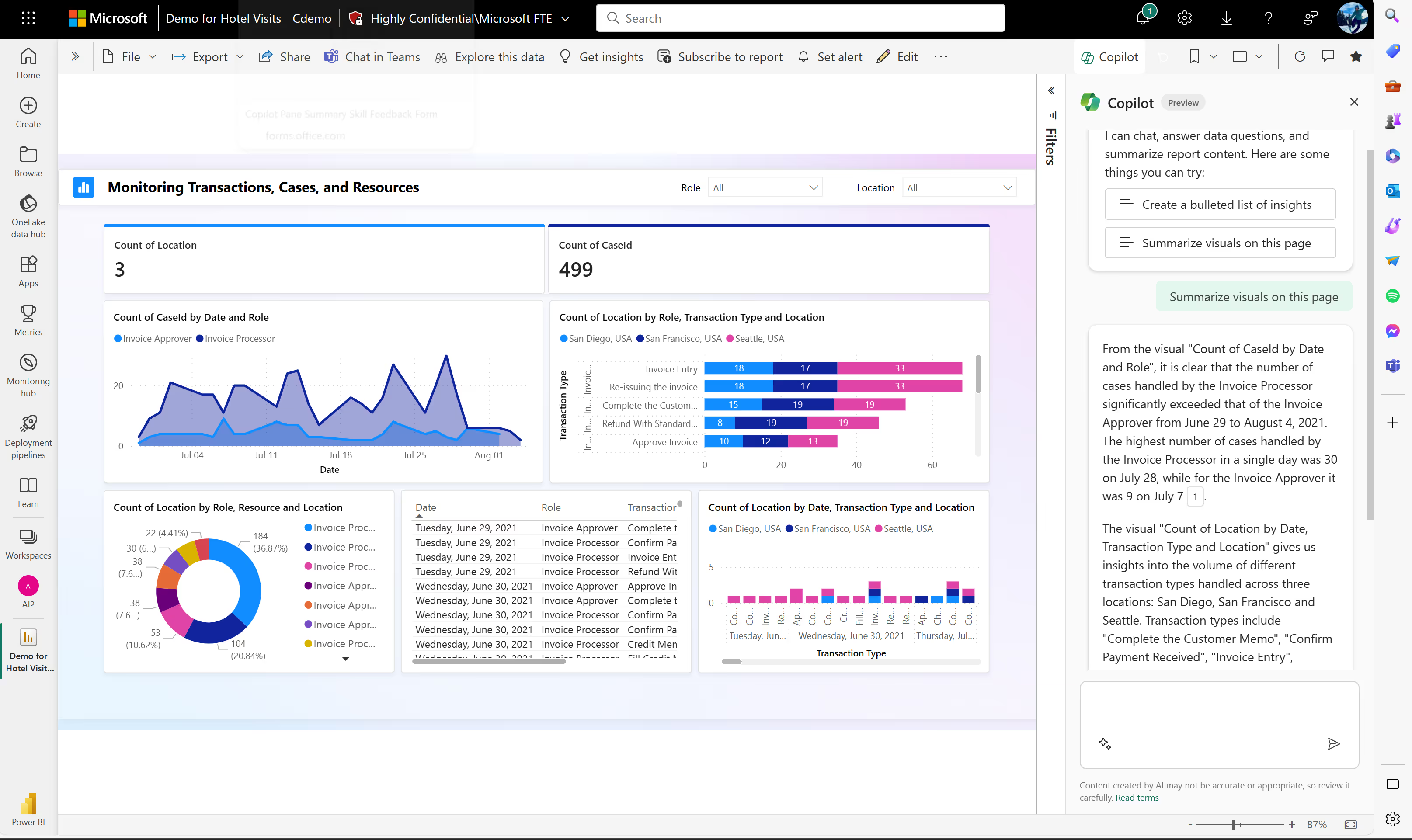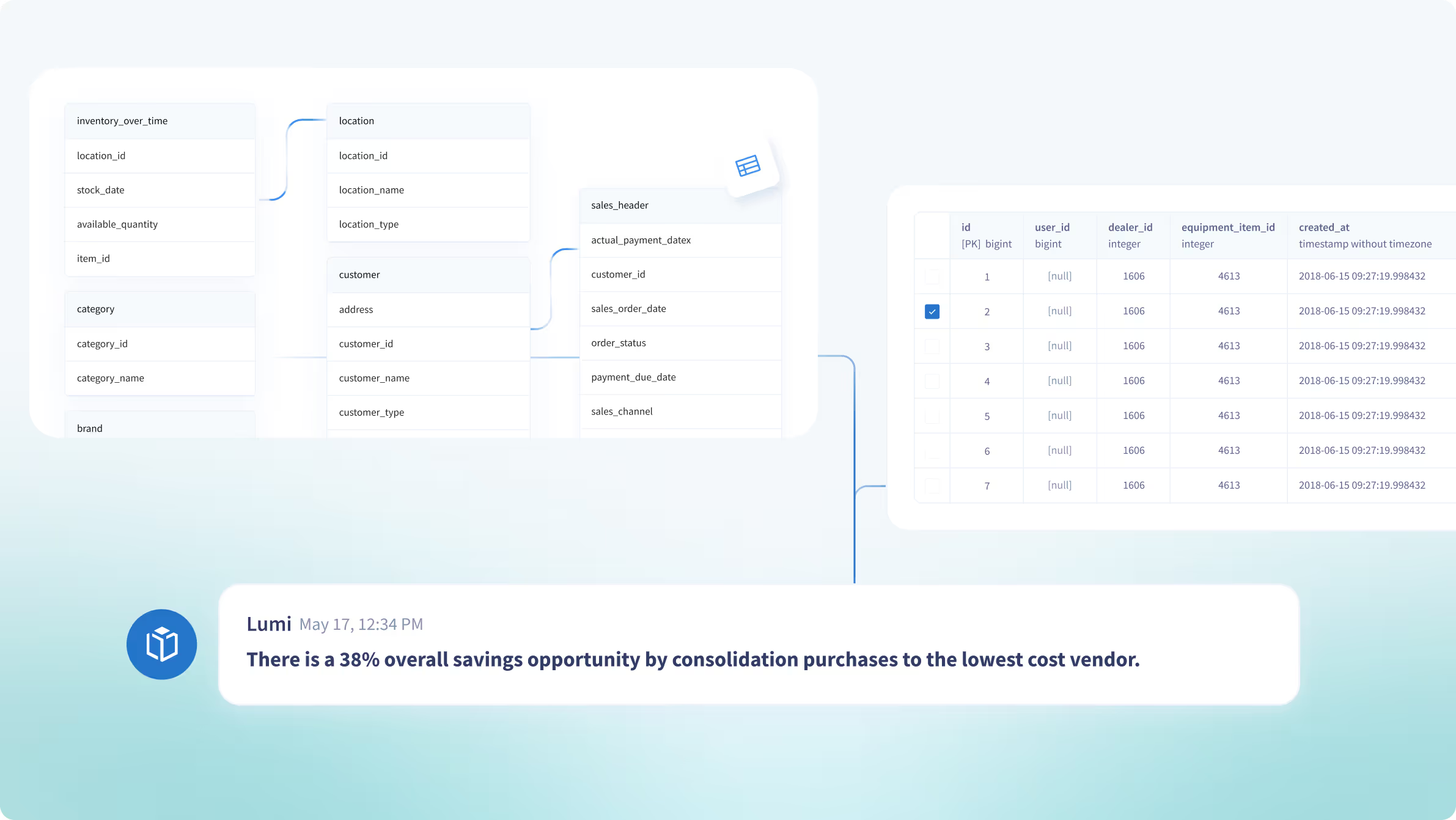Back to blog
Back to Case Studies
AI Tools for Data Analysis: Understanding the Landscape
.avif)


Introduction
The advent of large language models (LLMs) has sparked an explosion of generative AI tools in the data and analytics space. Promises of "talk to your data capabilities" and "AI-powered insights" are ubiquitous, making it challenging to discern what's real and what's mere hype.
This article aims to provide a clear framework to map out the current landscape of these tools, helping stakeholders navigate the noise and understand the true potential and limitations of different applications.
What is AI Data Analysis?
AI data analysis is the process of leveraging artificial intelligence to extract insights, identify patterns, and uncover trends in large datasets. It involves using advanced algorithms and computational power to analyze both structured and unstructured data faster and more accurately than traditional methods.
Key components of AI data analysis include:
- Machine Learning (ML): Automates the identification of patterns and relationships within data to make predictions or decisions.
- Natural Language Processing (NLP): Extracts meaning from unstructured text data, enabling sentiment analysis, document summarization, and more.
- Generative AI (LLMs): Leverages large language models to generate human-like text, automate code generation, and create new content or workflows.
Example: A logistics company leverages AI to analyze real-time shipping data. By identifying routes with recurring delays, this insight can reducing delivery times and operational costs.
General AI vs. Narrow AI: Use cases in AI Data Analytics
In the context of data analytics, understanding the distinction between general AI and narrow AI is critical to leveraging these technologies effectively:
- General AI: These systems excel at understanding human intent and performing a wide range of tasks. For example, general AI can interpret a natural language query like, "Show me last quarter's revenue by region," and automatically generate the appropriate SQL code to extract the required data. General AI can also integrate with multiple tools, enabling workflows like building dashboards, automating reports, or triggering actions based on user input.
- Narrow AI: These are highly specialized systems designed to tackle specific tasks, such as predicting future sales based on historical data or identifying anomalies in a dataset. Narrow AI relies on purpose-built machine learning models to focus on discrete objectives, such as detecting customer churn or optimizing inventory levels.
The AI-Powered Data Tool Landscape
The various types of applications designed to enhance data and analytics processes can be broadly categorized into six main types:

TL/DR - Just tell me which one to use
I am a non-technical hobbyist or small business owner looking for quick & simple analysis:
- Upload-Your-Data & Chat Tools
- Simple Data Chatbots
I am data analyst looking for a faster way to create custom visuals:
- AI-powered BI Applications
I want to boost my productivity as a developer/ data analyst/ data scientist:
- Text-to-SQL Developer Tools
- AI-powered Data Science Platforms
I am a leader looking to better service business teams’ analytical needs and free up technical resources by automating routine data tasks:
- Multi-agent applications
Upload-Your-Data & Chat Tools
Intended Function:
These applications cater to hobbyists and small-scale data tasks. They allow users to upload small datasets, like CSVs or PDFs, and interact with the data through a chat interface powered by generative AI.
Intended Audience:
Small businesses, hobbyists, and non-technical users who need to perform quick analyses or exploratory data tasks without deep technical skills.
Types of Datasets:
Small datasets, such as CSV files or PDFs, suitable for quick and simple analyses.
Notable Vendors
- ChatGPT: Allows users to upload small datasets and ask data questions, receiving responses in natural language.
Pros:
- Simple and easy to use
- Ideal for small-scale analyses
- Accessible to non-technical users
Cons:
- Limited scalability
- Lacks advanced analytical features and integrations
- Not suitable for large or complex datasets
Text-to-SQL Developer Tools
Intended Function:
Text-to-SQL developer tools help technical users quickly generate SQL queries from natural language inputs, streamlining query writing while allowing for manual review and execution.
Intended Audience:
Technical users, such as data analysts and developers, who have the expertise to review and execute SQL queries.
Types of Datasets:
Structured datasets in relational databases, such as SQL databases.
Notable Vendors
- Snowflake CoPilot: Integrates with Snowflake's data platform to provide natural language query generation.
- Gemini Assistance: Provides AI-driven SQL generation to facilitate faster data querying in BigQuery
- Hex Magic: Integrates with Hex workspace to provide natural language query generation.
Pros:
- Speeds up query writing
- Integrates with existing workflows
- Enhances productivity for technical users
Cons:
- May not handle complex queries
- May not understand business lingo
- Not accessible to non-technical business users

Simple Data Chatbots
Intended Function:
Single Agent Data Chatbots enable users to generate and execute SQL queries in a SQL database through a chat interface. They provide visualizations and summaries, making data analysis accessible via natural language queries.
Intended Audience:
Both technical users, such as developers and data analysts, and business users who need quick, actionable insights without requiring deep technical knowledge.
Types of Datasets:
Structured datasets in relational databases, such as SQL databases.
Pros:
- Interactive data querying
- Quick insights
- User-friendly interface
Cons:
- Limited to single-agent capabilities
- Prone to hallucinations/ inaccurate output
- May not handle complex queries
- Potential security and data privacy concerns depending on deployment
AI-Powered BI Applications
Intended Function:
AI for BI (Business Intelligence) applications leverage generative AI to streamline the creation of visuals and the summarization of insights. While some claim to enable natural language interaction for business users, the effectiveness of these features varies significantly.
Intended Audience:
The primary users of AI for BI applications are technical professionals, such as data analysts and developers, who benefit from streamlined data visualization creation. Business users can also benefit, especially from features that simplify finding pre-made dashboards and summarizing them.
Types of Datasets:
Small spreadsheets or large structured datasets, such as those found in enterprise data warehouses or large-scale business operations.
Notable Vendors
- ThoughtSpot: Allows users to generate visuals from natural language prompts. Explore Thoughtspot vs Lumi AI for more details.
- Power BI Co-Pilot: Allows developers to generate visuals from natural language prompts.
- Tableau Pulse: Uses an LLM to summarize visuals and simplify searching for pre-made dashboards
Pros:
- Simplifies process of creating custom visuals and dashboards
Cons:
- May not handle complex queries
- Requires data model preparation before use
- Effectiveness of natural language interaction can vary

AI-Powered Data Science Platforms
Intended Function:
Data science platforms are using generative AI to streamline the process of building, deploying, and managing machine learning models and LLM-powered applications.
Intended Audience:
Data scientists and researchers looking for robust solutions to streamline the data science lifecycle, including model building, deployment, and monitoring.
Types of Datasets:
Large structured datasets and unstructured data, suitable for advanced analytics and machine learning model training.
Notable Vendors
- DataRobot: Provides capabilities to build and deploy predictive models and LLM applications.
- Alteryx AiDIN: Uses LLMs to streamline the creation of Alteryx workflows, automate report generation, and summarize existing Alteryx workflow.
- Dataiku AI Assistants: Uses LLMs to help create Dataiku data workflows, write and debug code, and summarize existing Dataiku flows.
Pros:
- Streamlines model building, deployment, and monitoring
- Supports complex data science workflows
- Enables the creation of LLM-powered applications
Cons:
- Requires expertise in data science and machine learning
- Can be resource-intensive and costly
- Steeper learning curve for non-technical users
Multi-Agent Applications
Intended Function:
Multi-agent applications use a network of AI agents to automate data tasks such as SQL generation, data analysis, and insights extraction. These systems can also take actions based on the analysis, providing a comprehensive and autonomous insights extraction and execution solution.
Intended Audience:
Business teams and technical data teams, looking for comprehensive solutions that automate multiple data processes and actions.
Notable Vendors:
- Number Station: Uses specialized agents to build end-to-end analytics solutions
- Lumi AI: Deploys a network of specialized AI agents to automate routine data tasks including code writing and data analysis, allowing non-technical users to instantly extract actionable insights from large operational datasets using plain language.
Types of Datasets:
Large operational datasets, often integrated with enterprise systems to provide real-time insights and automation.
Pros:
- Comprehensive automation of analytics and insights
- scales well with complexity
- Capable of action execution based on insights
Cons:
- Higher cost and complexity
- Requires integration effort with existing systems
Comparative Analysis Summary

Conclusion
The explosion of generative AI tools powered by large language models (LLMs) has transformed the data and analytics landscape. From Upload-Your-Data & Chat Tools for non-technical users to Text-to-SQL Developer Tools for technical professionals, and Multi-Agent Applications for comprehensive automation, each category addresses unique needs and challenges.While these tools enhance productivity, simplify data interactions, and provide advanced analytics, they also come with limitations such as scalability issues, the need for technical expertise, and integration complexities. Understanding the specific use cases and pros and cons of each tool is crucial for effective implementation.
Discover how Lumi AI's multi agent architecture can revolutionize your data and analytics processes with advanced AI-driven insights and automation. Book your demo today.

Make Better, Faster Decisions.

.avif)

.avif)




